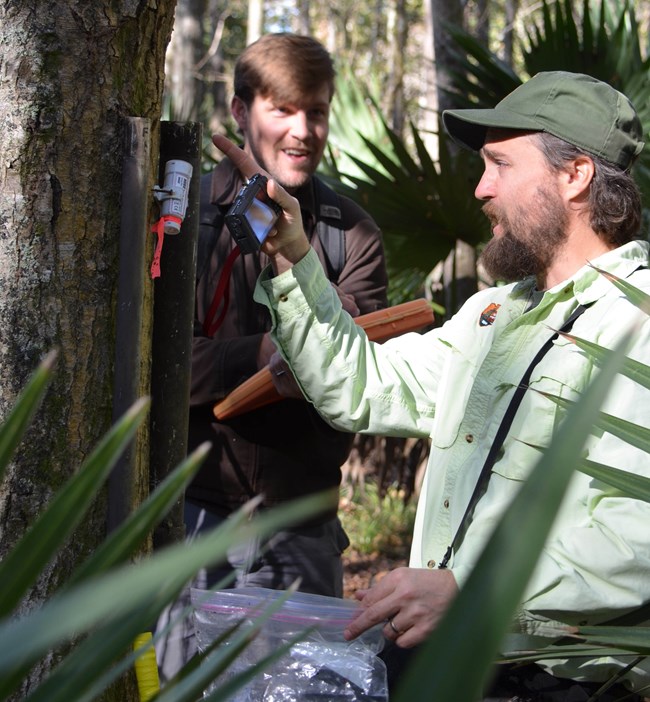
Photo credit: Chris Adams
The Gulf Coast is home to many amphibian species, and in fact, the region is near the top for amphibian species richness in the United States. Amphibians are a key vital sign for monitoring in Gulf Coast Network parks because
- Many amphibian species are geographically restricted, which means they are only found in a few locations.
- Some parks have specifically identified at-risk species in their management plan.
- Amphibians are good indicators of wider ecosystem change because they have semi-permeable skin and often have aquatic larval stages. This makes them highly sensitve to habitat change and particularly to changes in water quality.
The complete background, rationale and procedures for amphibian monitoring by the network are described in a protocol narrative and 8 standard operating procedure (SOP) documents. The protocol is titled "Monitoring Amphibians in Gulf Coast Network Parks". It was published in the NPS Natural Resource Report Series in late 2018, and it is available to the public on IRMA, following the links posted further below.
A summary of the vital sign and monitoring approach can also be found in the 2-page brief: Amphibian Monitoring Program Summary.
The Gulf Coast Network's approach to long-term monitoring of this vital sign focuses on a subset of amphibian species. To learn more about all amphibian species in network parks, see our park-specific inventory reports and species lists for amphibians and reptiles. We also have a short video about our amphibian monitoring protocol, which you can watch here.
Our Most Recent Web Articles on Amphibian Monitoring
Source: NPS DataStore Saved Search 3495. To search for additional information, visit the NPS DataStore.
Source: NPS DataStore Saved Search 3494. To search for additional information, visit the NPS DataStore.

GULN/NPS

GULN/NPS

Photo by Chris Adams

Jane Carlson/NPS
Last updated: May 9, 2025
